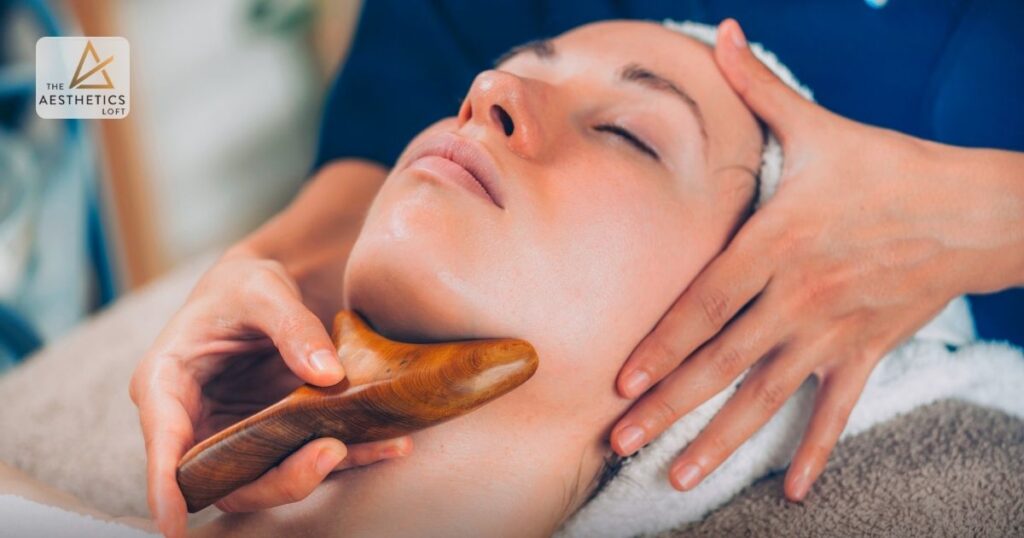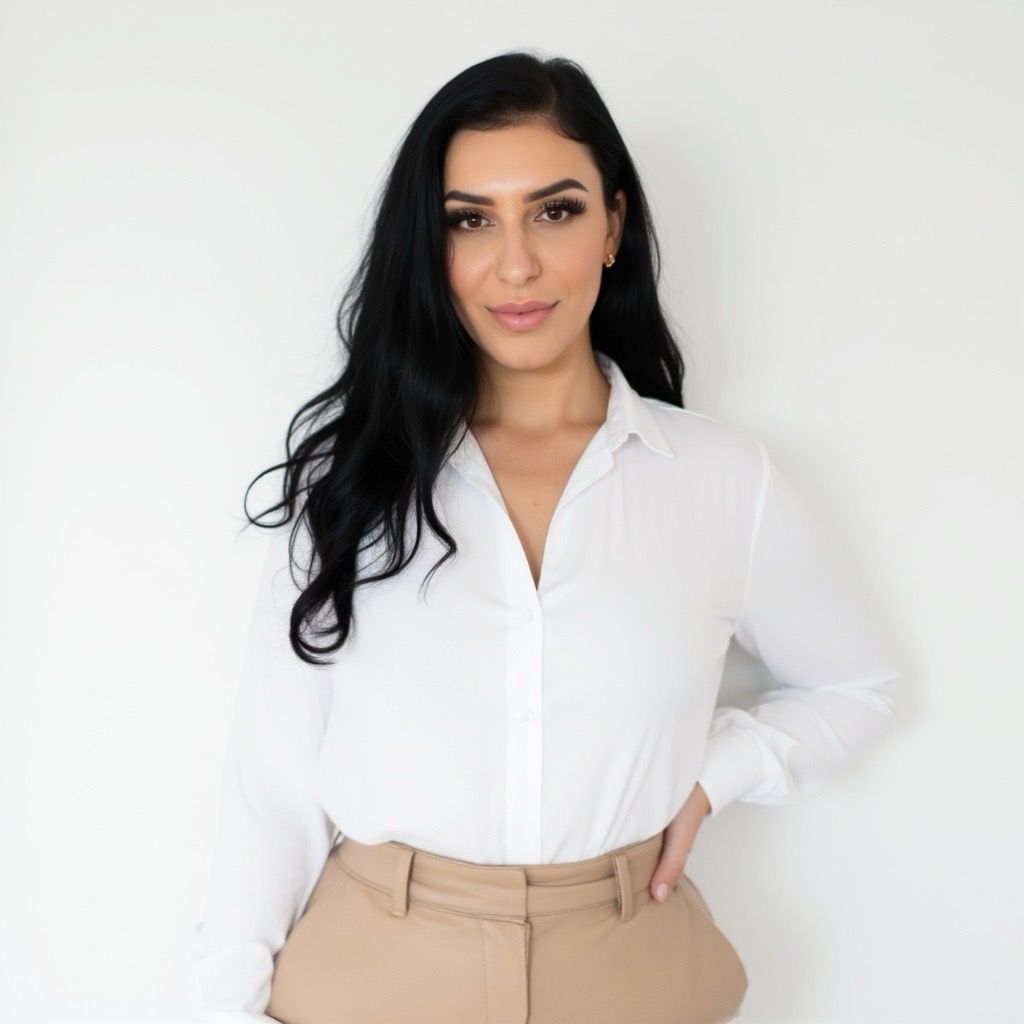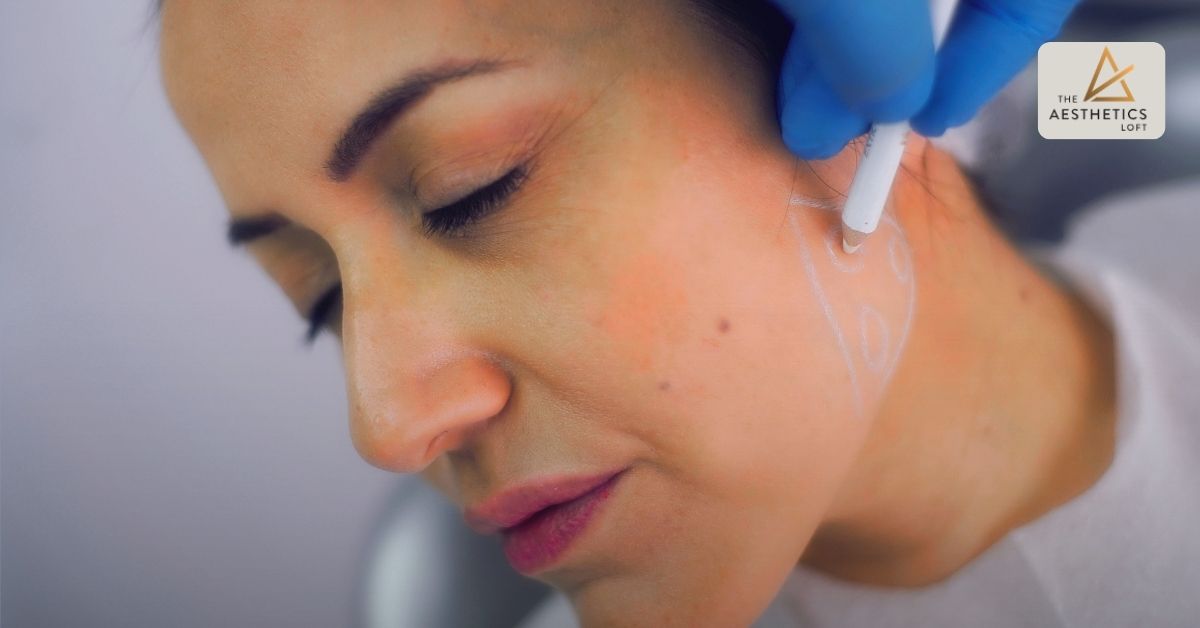Kybella has quickly become a go-to treatment for people who want to reduce a double chin without surgery. It’s an FDA-approved injectable that helps break down and remove stubborn fat under the chin, giving the jawline a more defined look.
What makes Kybella stand out is its scientific approach. Instead of freezing or cutting fat, it uses a synthetic version of deoxycholic acid — a substance your body already makes to help digest fat. When injected, it targets and destroys fat cells, which the body then naturally breaks down and clears away.
This article breaks down how Kybella works, what to expect during treatment, the results you can realistically hope for, and who it’s best for. You’ll also learn about safety, side effects, and how it compares to other jawline contouring options. Let’s dive in and help you understand if Kybella is right for you.
What Is Kybella?
Kybella is an injectable treatment that uses synthetic deoxycholic acid to break down and absorb fat under the chin. Deoxycholic acid is a substance your body naturally makes to help process dietary fat. When injected into small pockets of fat, Kybella destroys fat cells, which the body then clears away over time.
In 2015, the FDA approved Kybella specifically for treating moderate to severe fat under the chin — also called submental fullness or a “double chin.” It quickly became popular as a non-surgical option for people wanting a sharper, more defined jawline without liposuction.
While Kybella is approved for under-chin use, some providers also use it off-label on small fat deposits in other areas, like underarm bulges or bra fat. Still, its main focus — and where it has been studied most — is the chin area.
How Kybella Works: Breaking Down the Science
The Role of Deoxycholic Acid
Deoxycholic acid is a natural substance made in your gut. Its job? Help break down the fat you eat so your body can absorb it. Scientists took this idea and created a purified, synthetic version for Kybella — one that works safely when injected under the skin.
When Kybella is injected, it doesn’t spread throughout your body. It works only where it’s placed, breaking down fat cells in the targeted area, like under the chin. That’s why it’s safe for aesthetic use.
How Fat Cells Are Destroyed
Here’s what happens step by step:
- Injection: A trained provider injects Kybella under the skin where you have unwanted fat.
- Cell breakdown: The deoxycholic acid in Kybella attacks the outer membrane (or “skin”) of the fat cells, breaking it open.
- Cell death: Once the membrane is damaged, the fat cell can’t survive — it dies and releases its fat.
- Cleanup: Your body recognizes the dead cells and uses the lymphatic system (your natural waste removal system) to carry away the leftovers over the next few weeks.
- Shrinkage: As the fat cells clear out, the treated area starts to look slimmer and more defined. This process takes time and often requires multiple sessions.
Why Results Are Permanent
Fat cells are different from other body cells because once they’re destroyed and removed, they don’t grow back. That’s why Kybella gives long-lasting results in the treated area.
However, this doesn’t mean you’re immune to weight gain. If you gain weight after Kybella, the remaining fat cells in your body — including around the chin — can still expand. So, maintaining a steady weight helps keep your new look.
What to Expect During Treatment
Consultation and Assessment
Before starting Kybella, you’ll have a consultation with a licensed provider. They will check if you’re a good fit — usually, people with moderate fat under the chin and firm skin see the best results. Loose skin may need other treatments.
The provider will also look at your chin and jawline from different angles to create a custom plan. This includes estimating how many sessions you’ll need (often 2–4) and mapping where each injection should go for even, natural-looking results.
The Injection Process
On treatment day, the area under your chin is cleaned, and a numbing agent — either ice or a lidocaine cream — is applied to reduce discomfort.
Next, the provider marks a grid pattern on your skin to guide the injections. This helps ensure even coverage.
The actual injections take only 15–20 minutes. You’ll feel small pinches or stings, but most people say the procedure is tolerable.
Recovery and Downtime
Right after treatment, expect swelling — sometimes quite noticeable — under the chin. This is normal and part of the fat breakdown process. Other common effects include mild bruising, tenderness, or a firm feeling in the area.
Swelling usually peaks in the first few days and improves over 1–2 weeks. Some people return to daily activities right away, while others prefer a few days of downtime.
Visible results start showing after a few weeks, with the full effect becoming clear after multiple sessions spaced about a month apart.
Kybella Results: What’s Realistic?
Most people need 2 to 4 Kybella sessions, spaced about a month apart, to see the full effect. Some with more under-chin fat may need up to 6 treatments. Results don’t show overnight — the body needs time to break down and clear the destroyed fat cells. Usually, people notice improvements after 4 to 6 weeks, with the jawline looking gradually slimmer and more defined after each session.
It’s important to set realistic expectations. Kybella works well for mild to moderate fat, but it’s not a “miracle fix” or a replacement for surgery if someone has a lot of fat or very loose skin. It can sharpen the jawline, reduce a double chin, and give a leaner profile — but it won’t change bone structure or remove skin.
Once the fat cells are gone, they’re gone for good. But keeping the results depends on maintaining a stable weight. Gaining weight after Kybella can still cause the remaining fat cells in your chin or other areas to expand. That’s why combining Kybella with healthy habits is the best way to keep your new look.
Who Is (and Isn’t) a Good Candidate?
Not everyone is a fit for Kybella, and knowing who qualifies is key to good results. Here’s a simple breakdown
Good candidates for Kybella:
- Adults with moderate fat under the chin (double chin)
- Firm or moderately firm skin that can adjust after fat loss
- Overall good health, with no major medical conditions
- Realistic expectations — understanding Kybella reduces fat, not skin
- Willing to complete multiple sessions for the best result
Who should avoid Kybella:
- People with loose, sagging skin under the chin (may need skin-tightening treatments)
- Those with severe obesity or large fat deposits may need other options.
- Pregnant or breastfeeding individuals
- Anyone with active infections or skin issues in the treatment area
- People with certain medical conditions that affect healing or nerve function
Before starting, a licensed provider will check if Kybella is safe and right for you.
Safety, Side Effects, and Risks
Kybella has been FDA-approved since 2015 and backed by clinical studies showing it’s safe when used correctly. But like any treatment, it comes with some side effects and small risks.
Common, temporary side effects:
- Swelling under the chin (often noticeable for a few days)
- Bruising or redness
- Numbness or tingling
- Firmness or mild soreness in the treated area
These usually go away within 1–2 weeks.
Rare but serious risks:
- Nerve injury, which can cause an uneven smile or muscle weakness (usually temporary)
- Difficulty swallowing
While these are uncommon, they highlight why Kybella should only be done by a trained, experienced provider. Proper injection technique and careful assessment help reduce risks and lead to the best, safest results.
Kybella vs. Other Jawline Contouring Options

Kybella is one of several ways to improve jawline definition without surgery. But how does it compare to other treatments? Here’s a clear breakdown.
Kybella vs. Liposuction
Liposuction is a surgical procedure where a surgeon removes fat through small incisions using a thin tube. It gives instant, dramatic results but involves anesthesia, recovery time, and possible scars. Kybella, by contrast, uses injections to break down fat over weeks. It’s slower but completely non-surgical, making it a good choice for those wanting less downtime.
Kybella vs. CoolSculpting
CoolSculpting uses a device to freeze fat cells, causing them to die off gradually. It works well on larger or flat areas (like the belly or thighs) but is less precise for small, curved zones like under the chin. Kybella allows targeted fat reduction through injections, making it often preferred for tricky spots.
Kybella vs. Skin Tightening (Morpheus8, Ultherapy, Thermage)
These devices use radiofrequency, ultrasound, or laser energy to stimulate collagen and tighten loose skin. They don’t remove fat. Kybella reduces fat but doesn’t tighten skin. For people with both fullness and sagging, combining Kybella with skin tightening may give the best result.
Other Treatments (brief mentions):
- SculpSure: laser fat reduction, mainly for the body; rarely used under the chin
- EmFace, FaceTite: energy-based treatments that mix contouring with some skin tightening
- Thread Lifts: dissolvable threads placed under the skin to lift sagging areas — no fat removal, but can improve jawline appearance
The best option depends on your fat levels, skin condition, and goals. A skilled provider can help you figure out whether Kybella alone or in combination with other treatments is right for you.
Conclusion
Kybella has changed the game for non-surgical fat reduction, offering a science-backed way to sculpt the jawline without anesthesia, scars, or long recovery times. But here’s what truly matters: Kybella works best when it’s part of a well-planned approach, not seen as a quick fix.
The real value of Kybella lies in combining three things: expert evaluation, realistic expectations, and commitment to a stable, healthy lifestyle. A skilled provider will tell you if Kybella is right for your specific needs — or if pairing it with skin tightening or another method will give you the best outcome.
For anyone frustrated by stubborn chin fat that resists diet and exercise, Kybella offers a practical solution that can last for years. But remember: it’s a partnership between treatment and your own efforts.
If you’re considering Kybella, choose an experienced provider, ask questions, and understand the process so you can make a confident, informed decision for your appearance.

